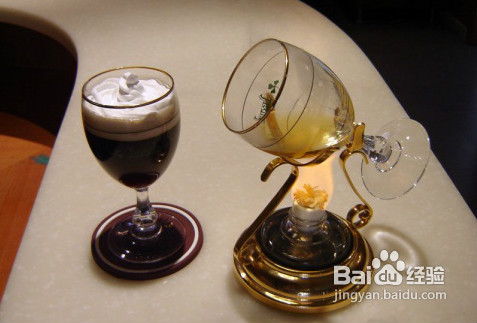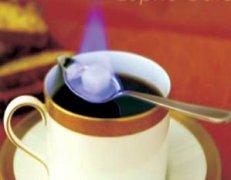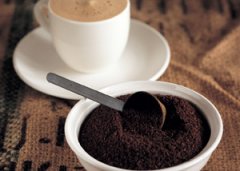A brief introduction to the cultivation of fine coffee beans in Valenford Manor, geographical location, climate and altitude

Jamaica is a tiny coffee grower, producing only 0.02 per cent of the world coffee market and exporting 85 per cent to Japan.
Among them, the leading driving role is the Jamaica Coffee Industry Board (CIB), which was established in 1948 with the original intention of promoting the development of Jamaica coffee industry, increasing the income of coffee farmers, protecting the quality of Jamaica coffee, and selling Jamaica coffee worldwide.
CIB makes a series of specifications to ensure the quality of Blue Mountain Coffee:
1. Clearly define production areas;
2. Selection of Arabica Iron Pickup varieties for cultivation;
3. Training coffee farmers (cultivation techniques, harvest handling techniques, environmental protection, etc.);
4. Improve coffee processing skills (stick to hand picking, only fully ripe red fruits; use washing method; control drying conditions to achieve a target moisture content of 12% coffee beans).
Blue Mountain Coffee is known to be the best coffee in the world. Do you know why it is so good? And what's better? The answer: Jamaica's weather, geology and topography combine to provide an ideal location.
Blue Mountains average elevation of 2100 meters, with fertile volcanic soil, and clean air pollution, humid climate, fog and rain all year round (The average precipitation is 1980 mm, the temperature is about 27 degrees), the unique environment and climate have created the world-famous Blue Mountain Coffee, which has all the characteristics of high-quality coffee in the world: not only the taste is rich and fragrant, but also because the coffee is sweet, sour and bitter. Perfect match, so completely no bitter taste, only moderate but perfect taste of sour a Blue Mountain Coffee Why taste pure "secret": Their coffee trees all grow on rugged hillsides, and the picking process is so difficult that unskilled local women workers simply cannot do it. It's important to pick coffee beans that are ripe, as immature or overripe can affect the quality of coffee. The beans are shelled the same day and allowed to ferment for 12-18 hours. Coffee beans are then washed and sifted. After that, the process is drying, which must be carried out on concrete floor or thick blanket until the humidity of coffee beans drops to 12%-14%. Then they are stored in special silos. When needed, it is taken out and roasted, and then ground into powder. These procedures must be strictly controlled, otherwise, the quality of coffee will be affected.
The best Blue Mountain coffee is undoubtedly one of the best coffee available. Although the price can guarantee an adequate supply of Blue Mountain coffee, it does not guarantee the best flavor. Also, this coffee tastes a lot more expensive than it looks. To taste its best flavor, put in more coffee beans than other coffee, otherwise the flavor will be a little different, so the flavor lies in it than the price of coffee to add 10% to 15% more coffee beans.
Types of Blue Mountain Coffee
Jamaica Blue Mountain coffee comes in three grades: Blue Mountain Coffee, Jamaica High Mountain Supreme Coffee Beans, and Jamaica Prime Coffee Beans. Blue Mountain Coffee and Alpine Coffee are divided into two grades. From quality to points from top to bottom: Blue Mountain No. 1, Blue Mountain No. 2, Mountain No. 1, Mountain No. 2, Jamaica coffee.
Usually, coffee grown between 457 meters and 1524 meters above sea level is called alpine coffee; coffee grown between 274 meters and 457 meters above sea level is called Jamaica coffee; coffee grown only in the Blue Mountain area above 1800 meters above sea level can be called Blue Mountain coffee, and Blue Mountain coffee is several times higher than alpine coffee in price. It is mainly distributed in John Crow, St. John's Peak,Mossman's Peak,High Peak and Blue Mountian Peak.
Blue Mountain Coffee is known to be the best coffee in the world. Do you know why it is so good? And what's better? The answer: Jamaica's weather, geology and topography combine to provide an ideal location. Blue Mountains average elevation of 2100 meters, with fertile volcanic soil, and clean air pollution, humid climate, foggy and rainy all year round (Average precipitation is 1980 mm, temperature is about 27 degrees), unique environment and climate created the world-famous Blue Mountain coffee, so that it has all the characteristics of high-quality coffee in the world: not only the taste is rich and mellow, but also because the coffee is sweet, sour and bitter. Perfect match, so completely without bitterness, only moderate but perfect sour taste.
Jamaica flag has a pair of crossed yellow diagonals, and there are four juxtaposed triangles, the upper and lower triangles are green, left and right triangles are black; Black represents the hardships that have been overcome and are facing, yellow represents natural wealth and sunshine, green represents hope and agricultural resources. More than 90% of Jamaica's people are black Africans and tend to be generally young. About 60% of the population is under the age of 29. However, as a result of marriage with other races for a century, Jamaica has a more diverse and unique culture. However, African culture still has a far-reaching influence here, whether in food, clothing, housing or transportation. Even music, dance, language, folk stories and other aspects can feel the tropical rain forest climate. May to June and September to November are rainy seasons every year, with the most showers in January and May. December to March of the following year is the dry season, and the weather turns cool. 6-11 The half year at the end of the month is a period of frequent hurricanes and tropical storms, often hit by hurricanes. Rainfall is abundant in the north-central region, the climate is generally between 22-32 degrees, and the annual average temperature is 27 degrees. The country is divided into three counties: Cornwall, Middlesex and Surrey. The three counties are divided into 14 boroughs, of which Kingston and St Andrew form a joint borough, so there are actually only 13 boroughs. The names of the districts are as follows: Kingston and St Andrew's Union, St Thomas, Portland, St Mary, St Anna, Triloni, St James, Hanover, Westmoreland, St Elizabeth, Manchester, Clarendon, St Catherine Ministers of State (11) in this Government sworn in on 17 September: Robert Montague Robert Montague, Minister of State in the Prime Minister's Office (in charge of local government affairs); Shahin Robinson Shahine Robinson, Minister of State in the Prime Minister's Office (Constituency Development Fund); Daryl Vaz (Daryl Vaz), Minister of State in the Prime Minister's Office Andrew Gallimore Andrew Gallimore, Minister of State for Labour and social protection; Joseph Hibbert Joseph Hibbert, Minister of State, Ministry of Transport and Works; Everard Warmington Everald Warmington, Minister of State for Water and Housing; Michael Stern Michael Stern, Minister of State for Industry, Commerce and Investment; William Hutchinson, Minister of State for Agriculture; Laurence Broderick, Minister of State for Energy, Mines and Telecommunications; Arthur Williams, Minister of State for National Security; Ronald Robinson, Minister of State for Foreign Affairs and Foreign Trade
Important Notice :
前街咖啡 FrontStreet Coffee has moved to new addredd:
FrontStreet Coffee Address: 315,Donghua East Road,GuangZhou
Tel:020 38364473
- Prev

A brief introduction to the market price of fine coffee beans in Valenford Manor with perfect sour taste
In order to ensure the quality of Blue Mountain Coffee, CIB made a series of specifications: 1. Clearly define the production area; 2. Choose to plant Arabica tin card varieties; 3. Training coffee farmers (planting techniques, harvest handling skills, environmental protection, etc.); 4. Improve coffee processing skills (insist on picking by hand, picking only fully ripe red fruits; use washing method; control drying conditions to make coffee beans
- Next

A brief introduction to the treatment method of grinding degree and baking degree of fine coffee beans in Valenford Manor
The north-central region is rich in rainfall, the climate is generally between 22 and 32 degrees, and the annual average temperature is 27 degrees. The country is divided into three counties: Cornwall, Middlesex and Surrey. The three counties are further divided into 14 districts, of which Kingston and St. Andrews form a joint district, so there are actually only 13 district governments. The names of the districts are as follows: the United District of Kingston and St. Andrew, Sainto.
Related
- Does Rose Summer choose Blue, Green or Red? Detailed explanation of Rose Summer Coffee plots and Classification in Panamanian Jade Manor
- What is the difference between the origin, producing area, processing plant, cooperative and manor of coffee beans?
- How fine does the espresso powder fit? how to grind the espresso?
- Sca coffee roasting degree color card coffee roasting degree 8 roasting color values what do you mean?
- The practice of lattes: how to make lattes at home
- Introduction to Indonesian Fine Coffee beans-- Java Coffee producing area of Indonesian Arabica Coffee
- How much will the flavor of light and medium roasted rose summer be expressed? What baking level is rose summer suitable for?
- Introduction to the characteristics of washing, sun-drying or wet-planing coffee commonly used in Mantenin, Indonesia
- Price characteristics of Arabica Coffee Bean Starbucks introduction to Manning Coffee Bean Taste producing area Variety Manor
- What is the authentic Yega flavor? What are the flavor characteristics of the really excellent Yejasuffi coffee beans?

